In recent years, people in Dong Thap Muoi region have taken advantage of their homeland's landscape to develop tourism during the flood season.
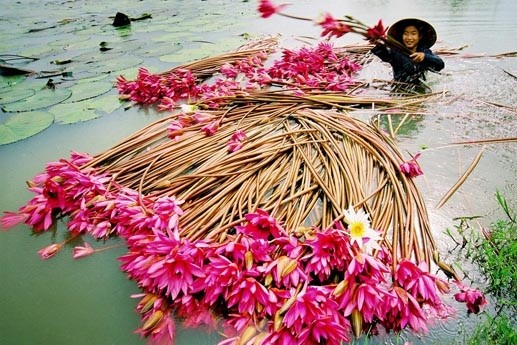 |
| People harvest water lilies during the flood season in Dong Thap Muoi region. (Source: Vietnam National Administration of Tourism) |
The flood season in Dong Thap Muoi takes place from July to October of the lunar calendar every year. The living habits and livelihoods of the people in Dong Thap Muoi during this year's flood season have contrasting colors.
Hard work
On a vast flooded field in Moc Hoa district, Long An province, Mr. Dang Van Cho herds his flock of more than 3,000 ducks to graze from 5am to 4pm every day.
Mr. Cho said he has been raising this flock of ducks for 7 months now. At first, the flock had about 5,000 ducks, but now it has dwindled to more than 3,000. The ducks are about to enter the peak egg-laying season. He goes to collect the duck eggs at 3 o'clock every day.
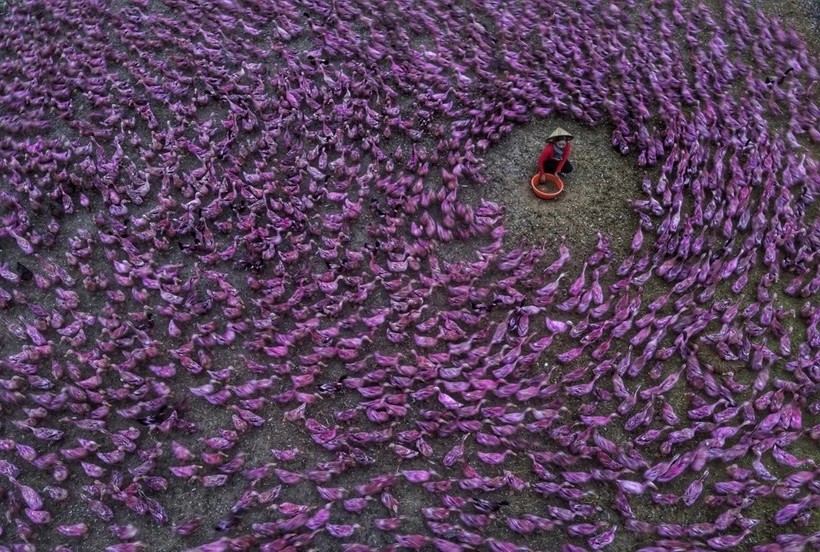 |
| A flock of ducks running in the fields is a familiar image to people in the West. (Source: VNA) |
At six o’clock, under the morning sunlight, Mr. Cho’s flock of ducks running in the fields contributes to creating a vivid, shimmering picture of the flood season in Dong Thap Muoi. In that picture, the sweat of the people of the Southwest region is soaked in their livelihood.
While watching the ducks running in the fields, Mr. Cho said that he is from Dong Thap province and is 71 years old this year. Having no land, he has been wandering through the fields with many batches of ducks for nearly 50 years. “Someone bought them in advance and then I herded the ducks, one acre cost 400,000 VND. In the morning, I let the ducks out in the fields, brought food, and came back in the afternoon to cook. I put up a mosquito net and slept outside, and gradually I got used to the wind and dew,” Mr. Cho confided.
Like that, all year round, he herds his ducks from one field to another, after people harvest the rice, there are still stubbles left. In this field, his ducks have eaten for more than ten days, until people sow rice, he goes to another field. The profession of raising ducks in the fields is facing difficulties, eggs are cheap but the price of buying rice is high. At high prices, 10 eggs are sold for 25,000 VND, now they are only sold for 20,000 VND.
This year's flood season, from the headwaters of the Mekong River where the flood begins, the water flows in slowly and is less than the average of many years.
Tan Hung District, Long An Province, borders Cambodia, although it is located in the low-lying Dong Thap Muoi area, the flood level this year is low. Mr. Huynh Van Que, Hung Dien Commune, Tan Hung District specializes in fishing when the water level rises.
Mr. Que shared that last year the water level rose to several meters, reaching chest level. This year, some places were 5 inches deep, some were ankle deep, the water was too small this year, there weren't many fish. When the water was high, one night, he set up more than 100 nets, traps, and cob nets, and the next day he harvested 250,000-300,000 VND. This year, the water was low, each night, he set up 70 nets, and the next day he only harvested 100,000-120,000 VND/night.
Bustling tourism in flood season
In recent years, the people of Dong Thap Muoi have taken advantage of their homeland's landscape to develop tourism during the flood season. Visitors to Dong Thap Muoi can experience the lives of the people such as catching fish, picking water lilies, and sesbania flowers... and enjoy rustic dishes such as snakehead fish braised with pepper; fish sauce braised with water lilies and chives; linh fish hotpot with sesbania flowers; crispy fried linh fish...
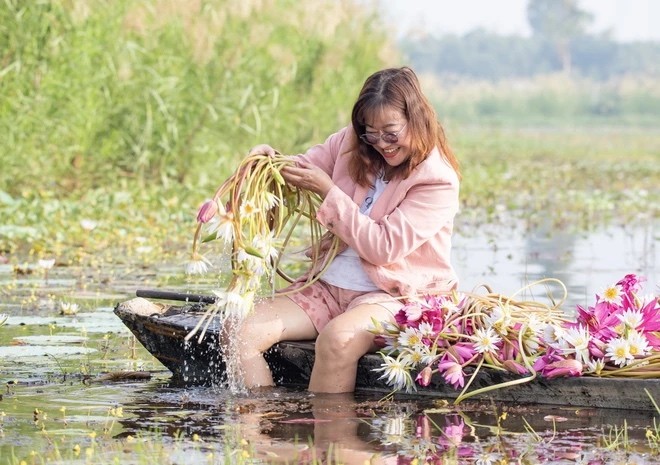 |
| Tourists experience picking guns. (Source: VNA) |
In the flooded fields of Moc Hoa district, women row boats to pick water lilies, creating a colorful picture. According to the locals, water lilies are often purple, red, and have thick stems when well cared for. Natural water lilies are usually white, with small stems 3-5m long. As the water rises, the water lilies grow taller. The picked water lilies are brought to the market to be sold for eating, or placed on boats for tourists to visit and experience.
Ms. Le Thi Kieu Minh in Moc Hoa district has been picking water lilies for more than ten years. In the past, she mainly brought them to the market to sell, but in recent years, she has also served tourists. Ms. Minh and a few other women pick a boat full of water lilies the previous afternoon, keeping them fresh to serve tourists early the next morning. On the vast fields of water, Western girls row boats full of colorful water lilies, creating a strangely peaceful scene.
“During peak season, I work like this about 3-4 days/week. Every year, this job is busy from July to the end of December. Working like this is fun, comfortable, not constrained, and also brings in extra income. Both domestic and foreign customers are very interested in the images we bring, feeling that makes me very happy,” Ms. Kieu Minh shared.
Experiencing the life of people in the flood season, Ms. Tran Thi Ngoc Ha said that she lives in Long An, but in Ben Luc district, which borders Ho Chi Minh City, there is no flood like in Dong Thap Muoi area. Through images on the internet, she wanted to arrange a trip here many times, and now she has finally been able to do it. The scenery here did not disappoint her.
“I experienced rowing a boat and taking pictures with water lilies, rowing a boat at sunset with the locals fishing with nets, wading in the fields to wash water lilies with them… the feeling was extremely interesting. The result was a set of sparkling but genuine photos, full of the essence of the homeland,” Ms. Ha shared.
Long An has the peaceful beauty of Dong Thap Muoi, especially attracting foreign tourists, allowing them to fully experience the life of the river delta in the West. Ms. Katarina Erdelyiova, a photographer from Slovakia, said that she has traveled to many places to experience life and hunt for images with regional characteristics. The first time she came to Vietnam and to the flood season in Dong Thap Muoi, she was extremely excited and impressed.
“Coming here, I feel like I am immersed in nature, the scenery is rustic, the air is fresh, the people are gentle and simple. I captured images: flocks of ducks running in the fields at dawn, girls rowing boats to harvest water lilies, or the scene of nets being spread in the sunset… all are very beautiful. I experienced the feeling of sitting on a boat crossing vast water fields, and especially, the food here is very impressive. I ate crispy fried linh fish, hotpot with fish sauce, I was full and not bored,” Katarina Erdelyiova happily shared.
This year's flood season, the water level is not high, the aquatic resources are not abundant, but the typical landscape and the jobs that make a living from the flood are still there for the people here. That is both a source of life and pride in their homeland's identity, helping them to have more joy and motivation to preserve and contribute to promoting the beauty of their homeland - the simple, rustic, poetic Dong Thap Muoi region.
Source


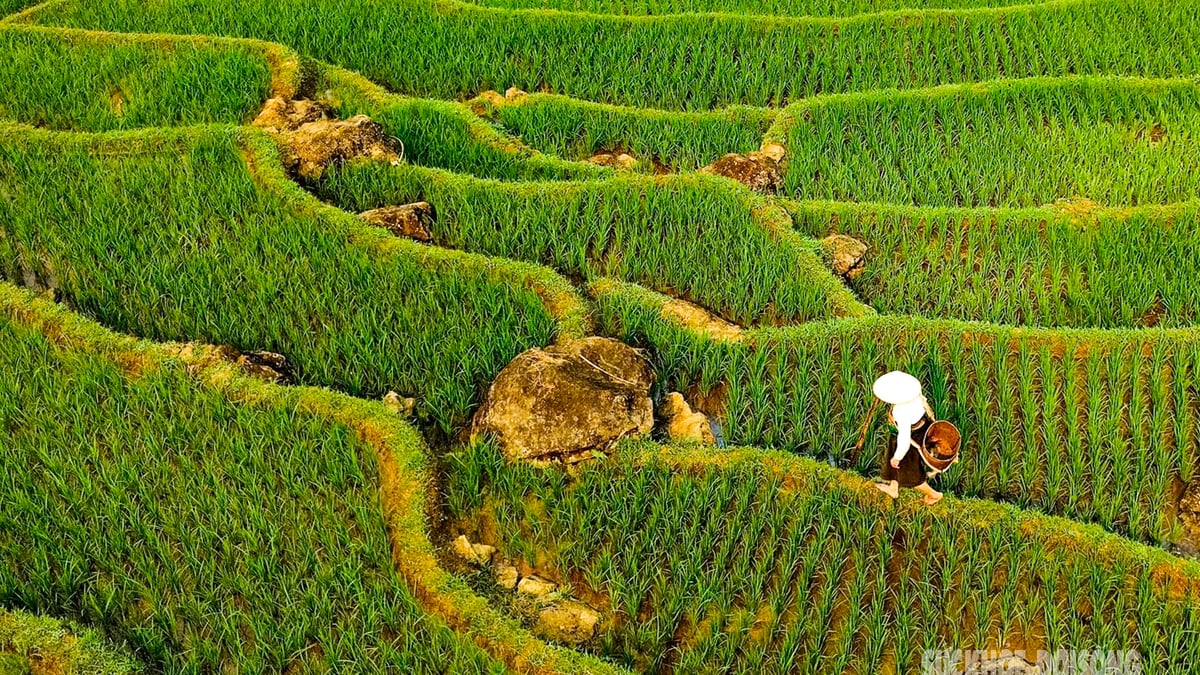
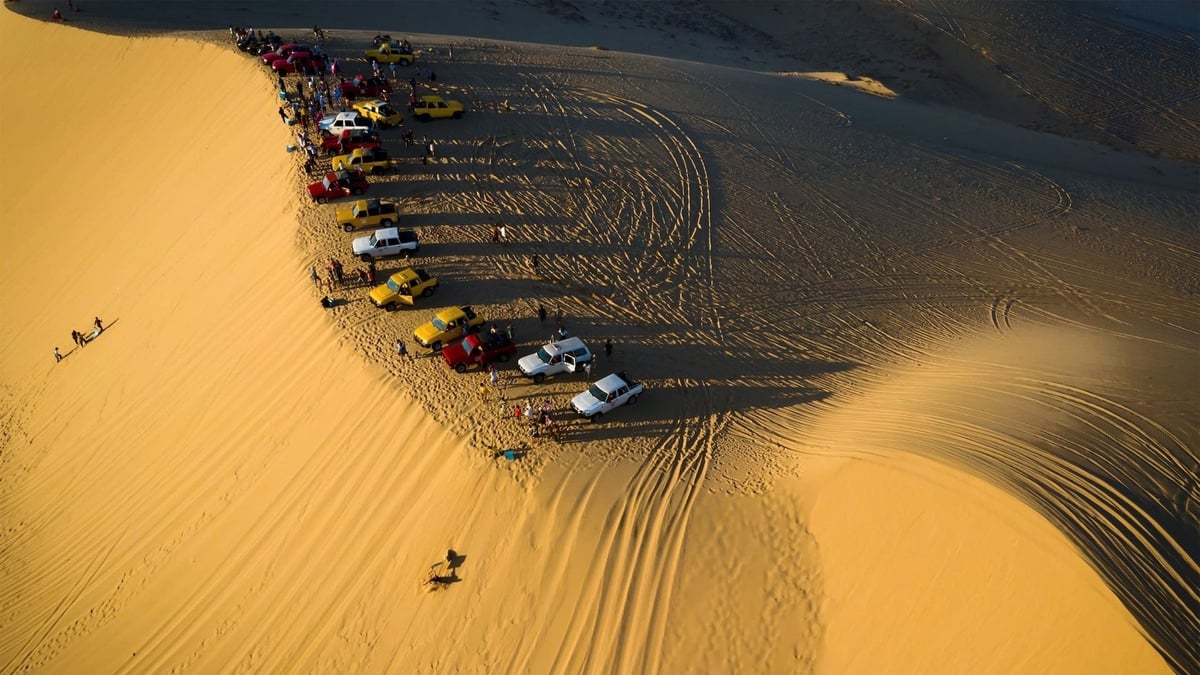
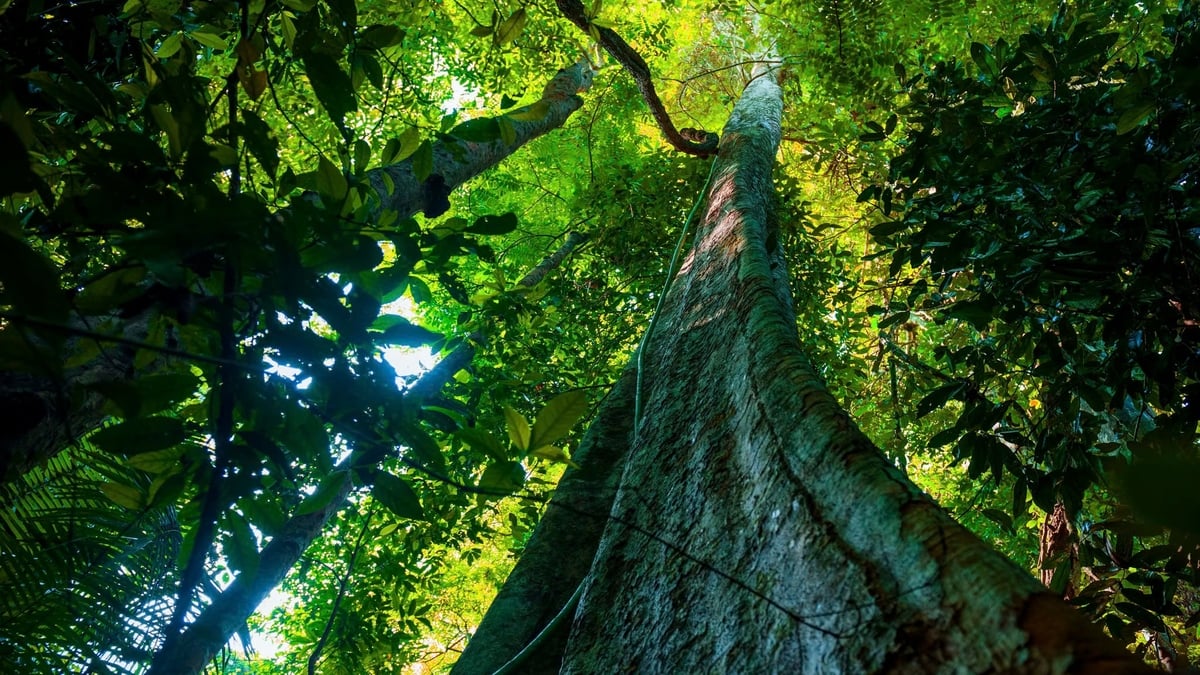
![[Photo] General Secretary To Lam concludes visit to Russia, departs for Belarus](https://vphoto.vietnam.vn/thumb/1200x675/vietnam/resource/IMAGE/2025/5/11/0acf1081a95e4b1d9886c67fdafd95ed)
![[Photo] General Secretary To Lam arrives in Minsk, begins state visit to Belarus](https://vphoto.vietnam.vn/thumb/1200x675/vietnam/resource/IMAGE/2025/5/11/76602f587468437f8b5b7104495f444d)
![[Photo] General Secretary To Lam meets and expresses gratitude to Vietnam's Belarusian friends](https://vphoto.vietnam.vn/thumb/1200x675/vietnam/resource/IMAGE/2025/5/11/c515ee2054c54a87aa8a7cb520f2fa6e)
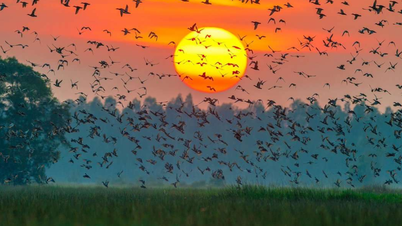

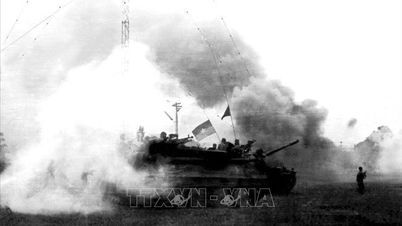

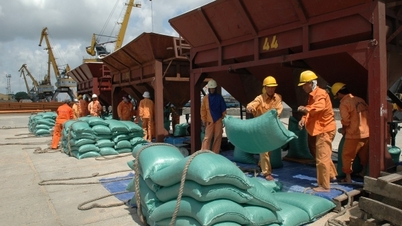



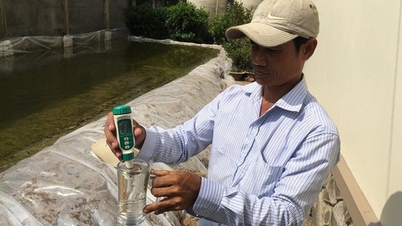
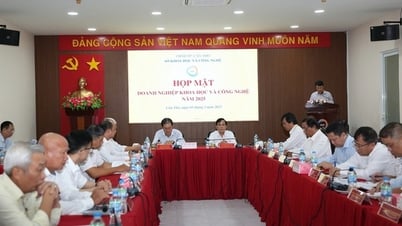

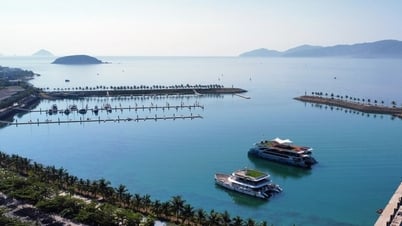
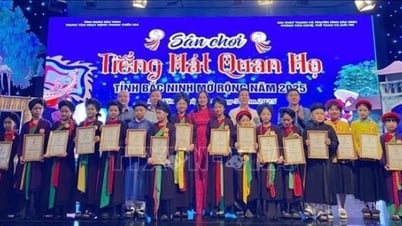
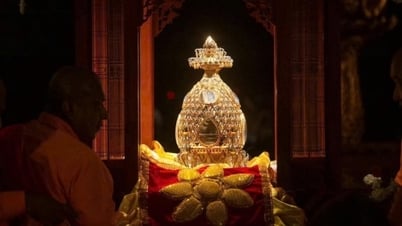

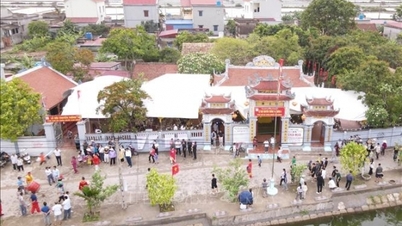
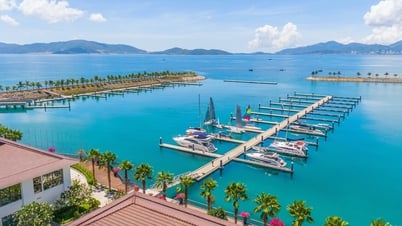


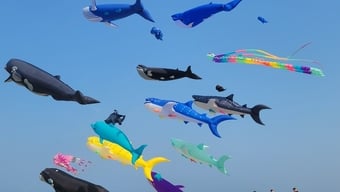







![[Photo] National Assembly Chairman Tran Thanh Man attends the Party Congress of the Committee for Culture and Social Affairs](https://vphoto.vietnam.vn/thumb/1200x675/vietnam/resource/IMAGE/2025/5/11/f5ed02beb9404bca998a08b34ef255a6)
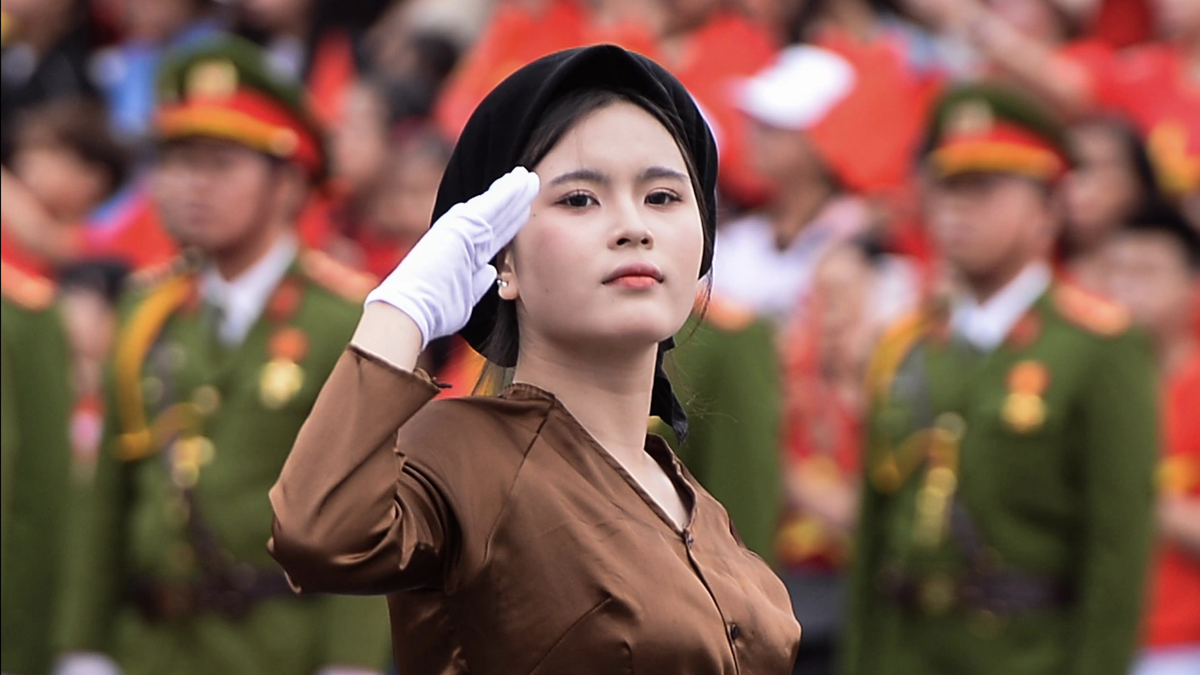
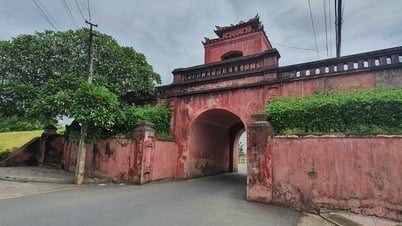



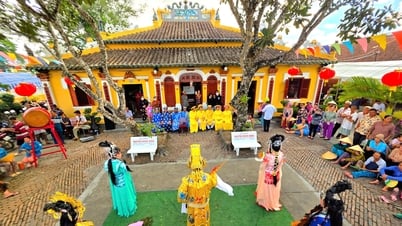
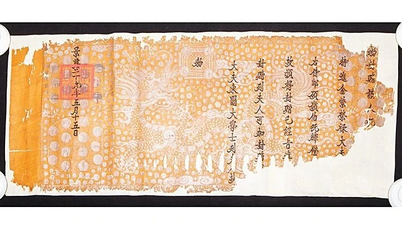


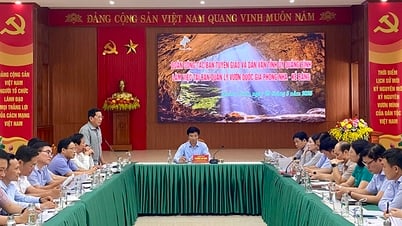








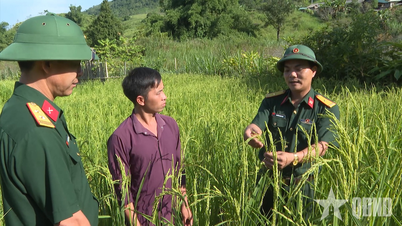













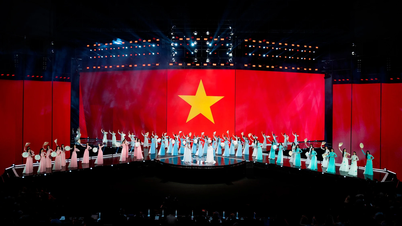










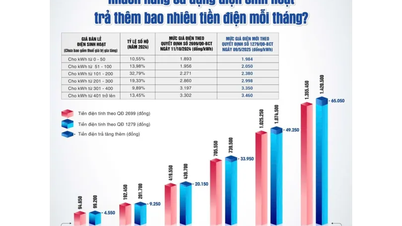





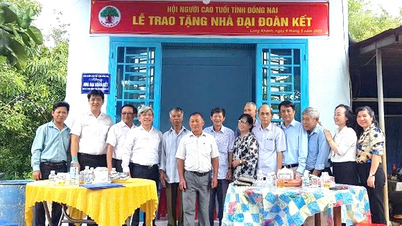

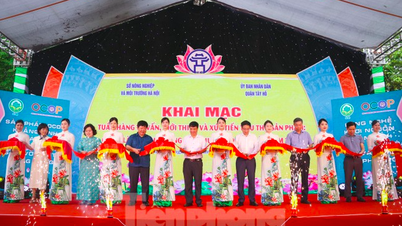

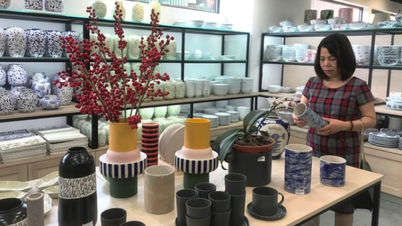
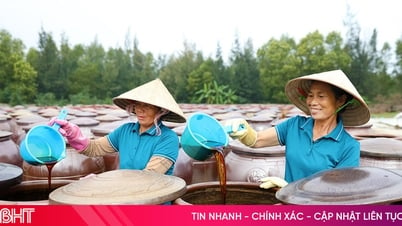



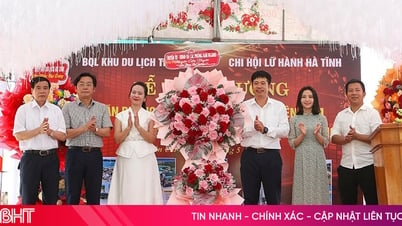
Comment (0)